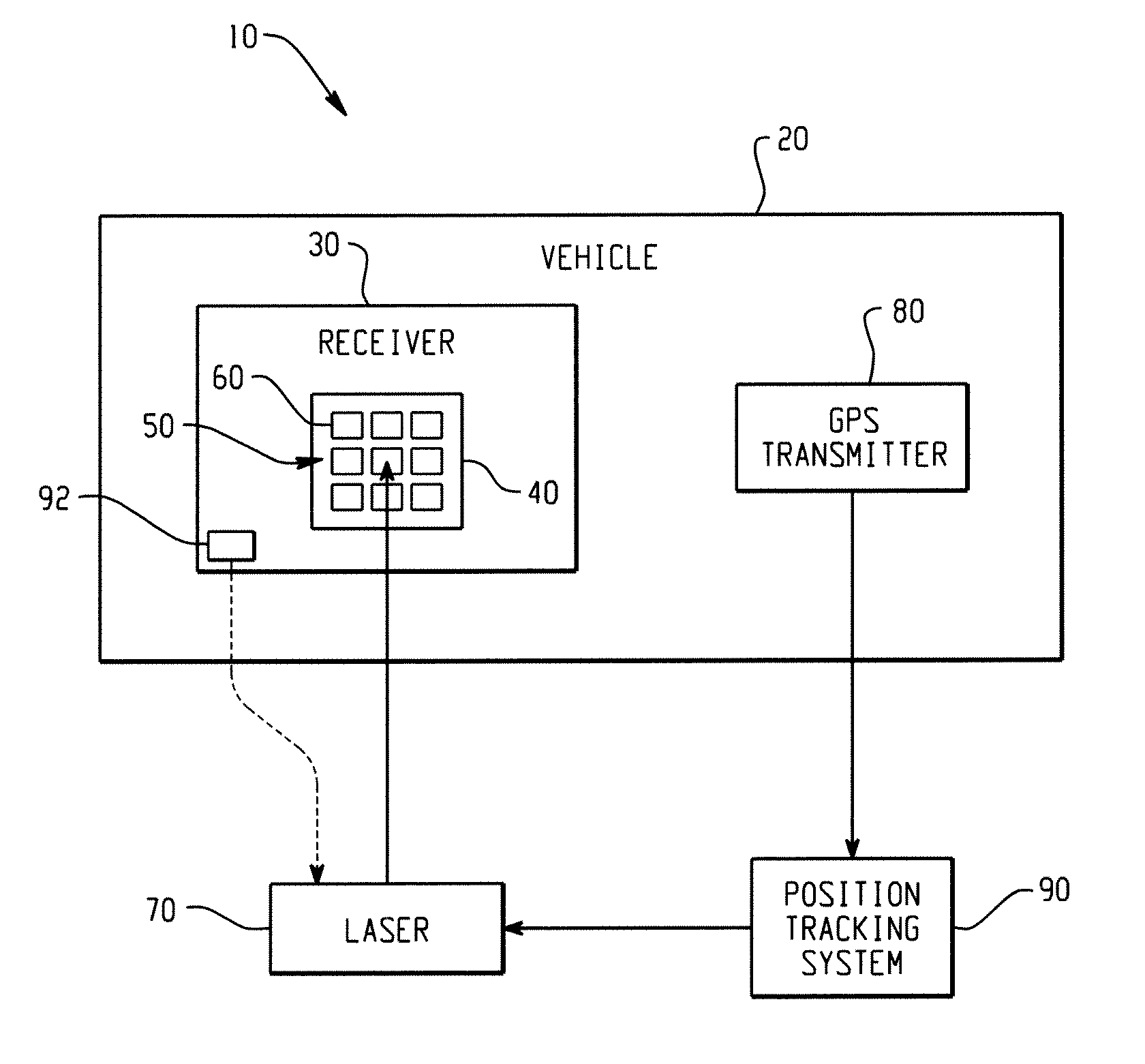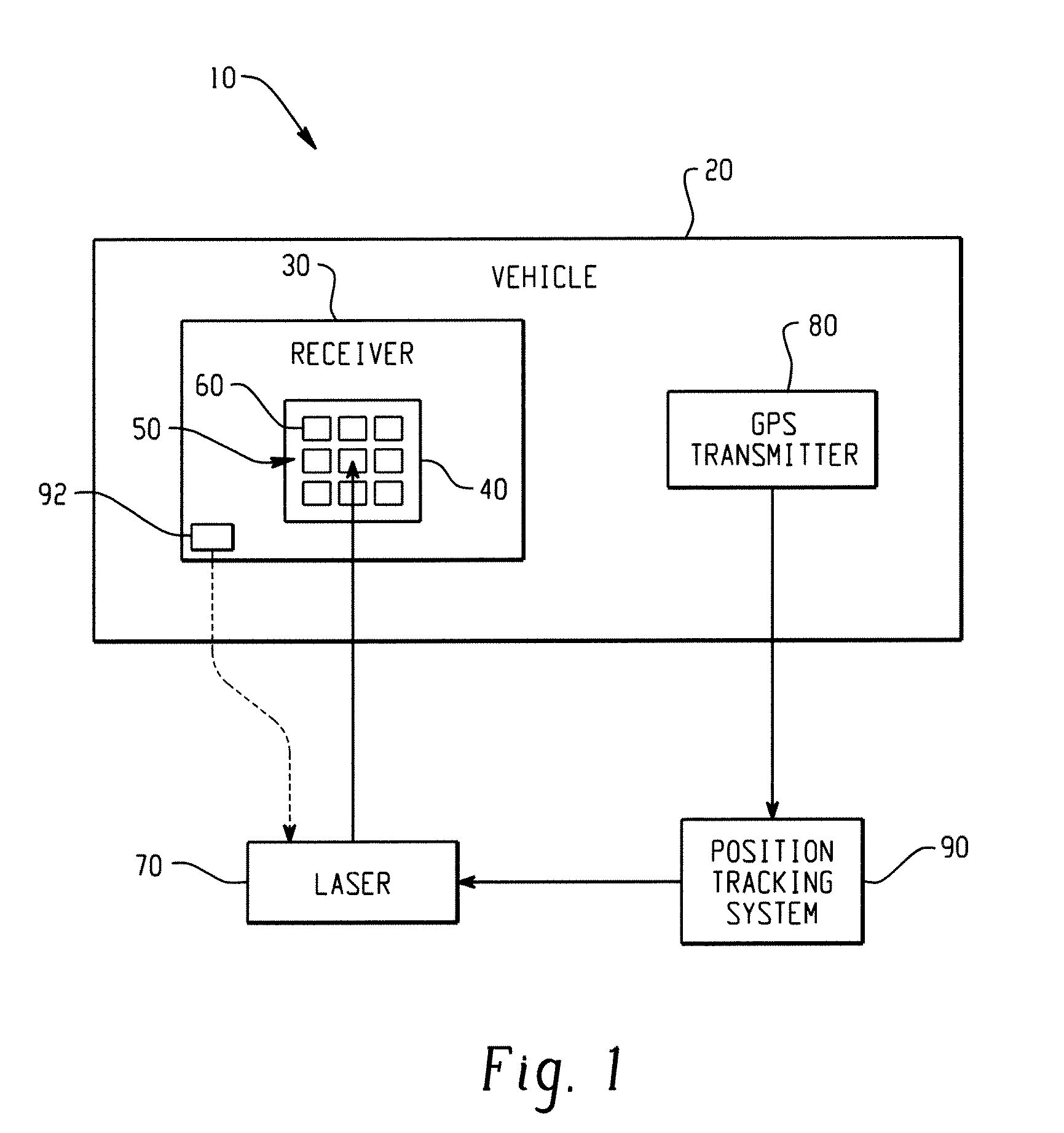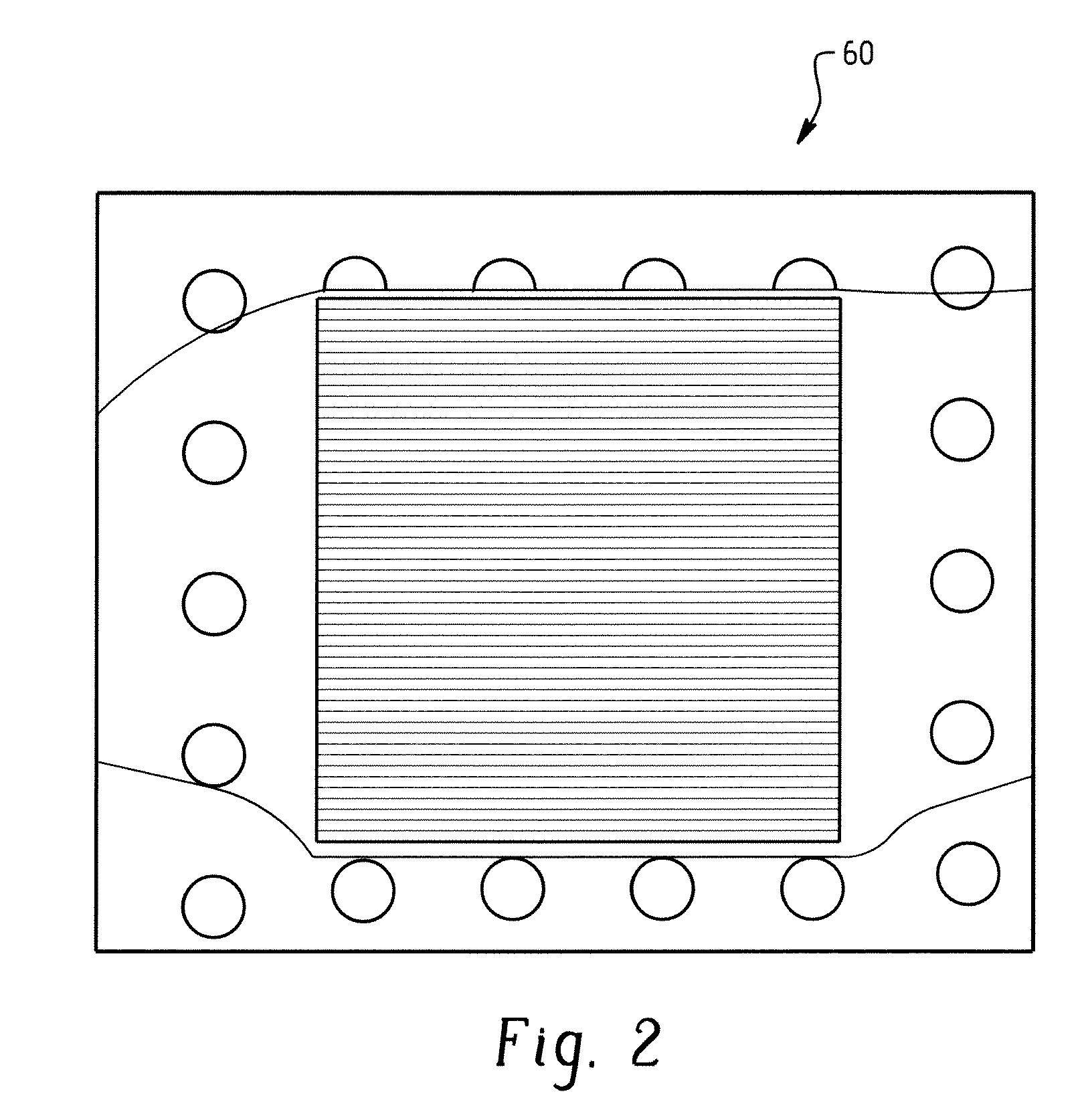High intensity laser power beaming receiver for space and terrestrial applications
a laser power beaming and receiver technology, applied in the direction of lighter-than-air aircraft, transportation and packaging, efficient propulsion technologies, etc., can solve the problems of limiting the capacity of the power plant, increasing the design cost, and affecting the beaming speed of the laser beaming device, so as to facilitate the laser power beaming and dissipate heat
- Summary
- Abstract
- Description
- Claims
- Application Information
AI Technical Summary
Benefits of technology
Problems solved by technology
Method used
Image
Examples
Embodiment Construction
[0022]Referring now to the drawings, which are presented for purposes of illustrating various embodiments only and not for purposes of limiting the claimed subject matter, various aspects of the innovation are depicted that relate to a high-intensity laser power receiving system for operations in the atmosphere and / or in space. Additionally, “exemplary,” as used herein, is to be interpreted to mean “an example of.”FIG. 1 illustrates a system 10 that employs high-intensity laser power beaming (HILPB) technology in conjunction with highly energetic photovoltaic cells to transmit large quantities of power wirelessly over large distances. The system 10 includes a vehicle 20, such as an unmanned aerial vehicle (UAV) and miniature UAV (MUAV), with a receiver 30 that optionally includes an aperture 40 for receiving high-intensity laser light. The laser light passes through the aperture and is incident upon a photovoltaic array 50 comprising one or more high-energy photocells 60. In another...
PUM
 Login to View More
Login to View More Abstract
Description
Claims
Application Information
 Login to View More
Login to View More - R&D
- Intellectual Property
- Life Sciences
- Materials
- Tech Scout
- Unparalleled Data Quality
- Higher Quality Content
- 60% Fewer Hallucinations
Browse by: Latest US Patents, China's latest patents, Technical Efficacy Thesaurus, Application Domain, Technology Topic, Popular Technical Reports.
© 2025 PatSnap. All rights reserved.Legal|Privacy policy|Modern Slavery Act Transparency Statement|Sitemap|About US| Contact US: help@patsnap.com



